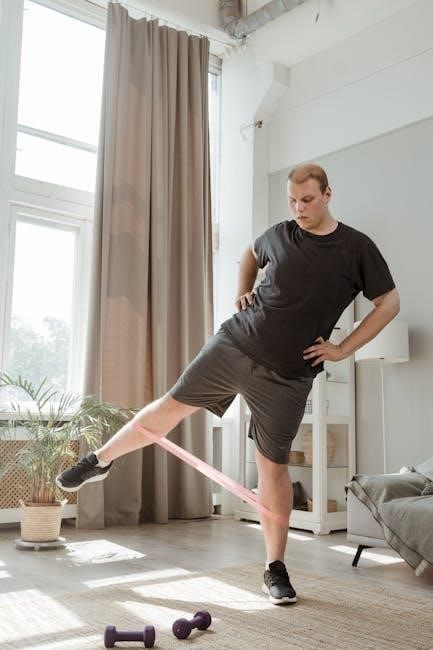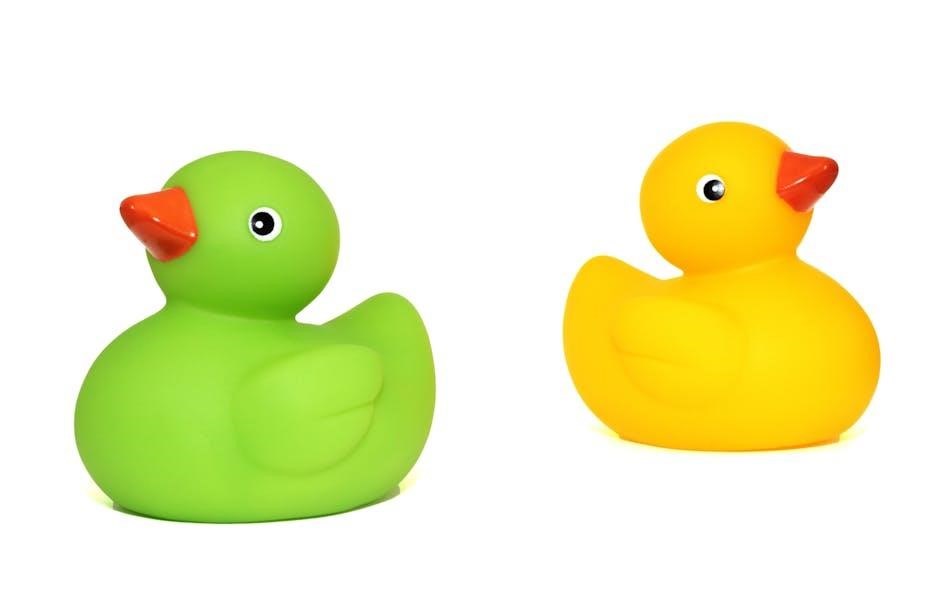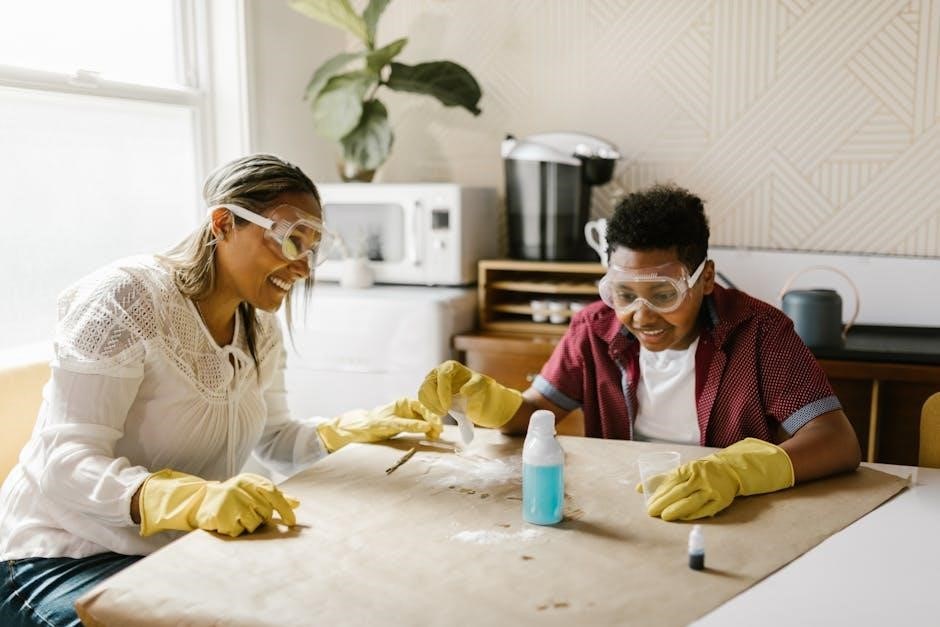rubber stopper size guide
Rubber stoppers, also known as rubber bungs, are versatile laboratory essentials used to seal flasks and test tubes. Their size and material quality ensure a secure, airtight fit.
1.1 What Are Rubber Stoppers?
Rubber stoppers, often referred to as rubber bungs, are cylindrical or conical plugs designed to seal laboratory glassware such as flasks and test tubes. Made from durable rubber materials, they provide a secure, airtight fit, preventing leakage and contamination. Their tapered design ensures compatibility with various glassware sizes, making them essential for maintaining the integrity of laboratory experiments. Available in different sizes, rubber stoppers are selected based on the specific needs of the glassware they are sealing. They are widely used in chemistry and biology labs to store liquids or gases, ensuring safety and hygiene during experiments. Their versatility and reliability make them indispensable tools in scientific settings.
1.2 History and Evolution of Rubber Stoppers
Rubber stoppers have a long history dating back to the early use of natural rubber. Initially, rubber was derived from the latex of the rubber tree, providing a flexible and durable material for various applications. The industrial revolution accelerated their development, with vulcanization making rubber more resistant to heat and chemicals. Over time, rubber stoppers evolved to meet the needs of laboratories, becoming essential for sealing glassware. The 20th century saw the introduction of synthetic rubber, offering improved consistency and resistance. Today, rubber stoppers are manufactured in precise sizes and materials, ensuring compatibility with modern laboratory equipment. Their evolution reflects advancements in materials science and the growing demands of scientific research.

Importance of Rubber Stoppers in Laboratories
Rubber stoppers are essential for sealing laboratory glassware, ensuring sterility and preventing contamination. Their precise fit and durability make them indispensable in maintaining controlled experimental conditions.
2.1 Role in Laboratory Equipment
Rubber stoppers play a critical role in laboratory equipment by providing a secure seal for flasks, test tubes, and other glassware. Their primary function is to prevent contamination and maintain sterility, ensuring the integrity of experiments. By creating an airtight seal, they prevent the entry of airborne particles and microorganisms, which is essential for controlled laboratory environments. Additionally, rubber stoppers are compatible with various laboratory glassware sizes, making them versatile for different applications. Their durability and resistance to chemicals further enhance their reliability in handling reactive or hazardous substances. Properly sized rubber stoppers are indispensable for maintaining precise experimental conditions, making them a fundamental component in laboratory settings.
2.2 Safety and Hygiene Considerations
Rubber stoppers are crucial for maintaining safety and hygiene in laboratories. They prevent contamination by sealing flasks and test tubes, ensuring sterility and preventing the entry of airborne particles. Properly sized stoppers minimize leakage risks, reducing exposure to hazardous substances. Regular sterilization, such as autoclaving, is essential to maintain hygiene standards. Durable rubber materials resist chemical degradation, ensuring long-term safety. Always select stoppers compatible with the glassware and substances used to avoid reactions. Proper storage and handling further prevent contamination. By prioritizing these factors, laboratories can ensure a safe and hygienic environment for experiments and procedures.

Understanding Rubber Stopper Sizes
Rubber stoppers come in standardized sizes to fit various laboratory glassware. Accurate sizing ensures a secure seal, preventing leaks and maintaining experiment integrity. Proper fit is crucial.
3.1 Standard Size Chart for Rubber Stoppers
A standard size chart for rubber stoppers is essential for ensuring compatibility with laboratory glassware. Sizes typically range from 5 to 50, corresponding to specific diameters and lengths. These measurements are designed to fit various flask and test tube openings precisely. The chart provides a reference for selecting the correct stopper based on the glassware’s neck size. Common sizes include 5 ( smallest), 10, 15, 20, 25, 30, 40, and 50 (largest). Each size ensures a secure, airtight seal, preventing leaks and contamination. Manufacturers often provide detailed charts to help users match stoppers to their equipment, ensuring proper fit and functionality in laboratory settings.
3.2 Measuring Rubber Stoppers Accurately
Measuring rubber stoppers accurately is crucial for ensuring they fit properly with laboratory glassware. Use a caliper or ruler to measure the diameter and length. Determine the size by measuring across the widest part of the stopper. Match the stopper size to the flask or test tube neck size, ensuring a snug fit. Refer to a standard size chart for compatibility, as sizes range from 5 to 50, corresponding to specific measurements. Proper sizing prevents leaks and contamination, ensuring a secure seal. Accurate measurement is key for optimal functionality in laboratory settings.

Choosing the Right Rubber Stopper
Selecting the right rubber stopper involves considering size, material, and compatibility with your glassware. Use a size guide to ensure a snug fit and prevent leaks.
4.1 Factors to Consider When Selecting a Size
Selecting the correct rubber stopper size is crucial for ensuring a proper seal and compatibility with laboratory glassware. Start by measuring the neck of your flask or test tube to determine the required stopper size. Refer to a standard size chart to match the stopper to your equipment. Consider the thickness and taper of the stopper to ensure a snug fit. Additionally, think about the laboratory’s specific needs, such as sterilization requirements or chemical compatibility. Using the wrong size can lead to leaks or improper sealing, which can compromise experiments. Always consult the manufacturer’s guidelines for precise measurements and recommendations.
4.2 Matching Stoppers to Laboratory Glassware
Matching rubber stoppers to laboratory glassware ensures compatibility and functionality. Always measure the glassware’s opening to select the appropriate stopper size. Use a size chart to guide your selection, ensuring the stopper fits snugly without forcing it in. Consider the glassware’s material and intended use, as certain stoppers are designed for specific applications. For example, some stoppers are suitable for high-temperature sterilization, while others may be chemically resistant. Proper alignment and fit prevent leaks and maintain the integrity of the experiment. Refer to manufacturer specifications for recommendations tailored to your equipment. This careful matching ensures optimal performance and longevity of both the stopper and the glassware.

Materials and Manufacturing of Rubber Stoppers
Rubber stoppers are crafted from durable, high-quality elastomers, ensuring resistance to chemicals and heat. The manufacturing process involves precise molding to achieve consistent sizes and shapes.
5.1 Types of Rubber Used
Rubber stoppers are typically made from high-quality elastomers, with natural rubber being the most common due to its excellent elasticity and sealing properties. Other materials include EPDM, known for its chemical resistance, and Viton, which offers superior performance in high-temperature applications. Silicone rubber is also used for its durability and versatility across various laboratory conditions. Each type of rubber is selected based on its compatibility with specific chemicals and operating environments, ensuring reliable performance in laboratory settings. The choice of material directly impacts the stopper’s ability to maintain a tight seal and resist degradation, making it a critical factor in laboratory equipment functionality.
5.2 Manufacturing Process and Quality Control
Rubber stoppers are manufactured through a precise process involving compounding, molding, and vulcanization. The rubber compound is first mixed to achieve the desired properties, then molded into the desired shape using high-precision molds. Vulcanization ensures the rubber is cured for optimal durability and sealing performance. Quality control measures are implemented at each stage to ensure consistency and reliability. Dimensional accuracy, material integrity, and surface finish are rigorously inspected to meet laboratory standards. This meticulous process guarantees that each rubber stopper meets the required specifications for laboratory use, ensuring a secure and reliable seal in various applications.

Common Applications of Rubber Stoppers
Rubber stoppers are widely used in laboratories to seal flasks, test tubes, and other glassware. They prevent contamination and maintain pressure, ensuring safe and precise experiments.
6.1 Use in Flasks and Test Tubes
Rubber stoppers are essential for sealing flasks and test tubes in laboratory settings. They are designed to create a tight, airtight seal, preventing contamination and maintaining internal pressure. Available in various sizes, these stoppers ensure compatibility with different flask and tube diameters. They are commonly used in chemical experiments, fermentation processes, and storage of samples. The rubber material provides durability and resistance to many chemicals, making them ideal for laboratory use. Properly fitting stoppers are crucial to prevent leaks and ensure experiment accuracy. Regular inspection and replacement are recommended to maintain their effectiveness and safety in laboratory procedures.
6.2 Use in Other Laboratory Equipment
Rubber stoppers are not limited to flasks and test tubes; they are also used in various other laboratory equipment. They are essential for sealing bioreactors, carboys, and separatory funnels, ensuring a tight fit to prevent leakage. In medical settings, they are used in syringes and vials to maintain sterility and prevent contamination. Their durability and resistance to chemicals make them ideal for use in vacuum desiccators and other specialized equipment. The versatility of rubber stoppers extends to laboratory glassware, where they provide a secure seal during experiments and storage. Proper sizing is crucial to ensure compatibility with different equipment, making them a reliable choice for diverse laboratory applications.

Rubber Stopper Size Guide for Different Industries
Rubber stoppers are customized to meet industry-specific needs, ensuring precise fits for laboratory glassware. Their sizes vary to accommodate flasks, test tubes, and other specialized equipment across sectors.
7.1 Pharmaceutical Industry Standards
The pharmaceutical industry requires rubber stoppers that meet stringent standards for sealing laboratory glassware. These stoppers must ensure airtight seals to prevent contamination and maintain the integrity of samples. Their sizes are precisely measured to fit specific flask and test tube diameters, ensuring compatibility and reliability. The materials used are carefully selected to withstand harsh chemicals and sterilization processes, making them ideal for high-purity environments. Quality control measures are rigorous, with stoppers undergoing thorough testing for durability and consistency. This ensures they meet the exacting demands of pharmaceutical research and production, where precision and safety are paramount. The size guide for these stoppers is tailored to match the unique needs of pharmaceutical equipment, ensuring optimal performance and compliance with industry regulations.
7.2 Biotechnology and Research Labs
In biotechnology and research labs, rubber stoppers are critical for maintaining sterile and controlled environments. Their precise sizing ensures compatibility with various glassware, such as flasks and test tubes, used in experiments. The materials are chosen for their resistance to chemicals and high temperatures, making them suitable for autoclaving. Laboratories often rely on stopper size guides to select the right fit for their equipment, preventing leaks and ensuring sample integrity. These stoppers are essential for storing biological samples, cultures, and reagents, where contamination must be avoided. Their durability and consistency are vital in supporting accurate and reproducible research outcomes. By adhering to specific size standards, biotech labs can maintain efficiency and reliability in their daily operations.

Maintenance and Care of Rubber Stoppers
Proper care extends the lifespan of rubber stoppers. Wash with mild detergent, avoid abrasive materials, and store in a dry place. Handle with care to prevent damage.
8.1 Cleaning and Sterilization Methods
Cleaning rubber stoppers involves using mild detergents and warm water to remove surface contaminants. For sterilization, autoclaving with high-pressure steam is effective. Soaking in ethanol can disinfect, but compatibility with rubber types is crucial. Ensure stoppers dry completely to prevent mold growth. Avoid harsh chemicals like bleach to prevent degradation. Regular cleaning and sterilization maintain hygiene and prevent contamination in laboratory settings.
8.2 Storage Tips to Maintain Quality
To maintain the quality of rubber stoppers, store them in a cool, dry place away from direct sunlight and moisture; Use airtight containers to protect from dust and contaminants. Avoid stacking stoppers, as this may cause deformation. Store them in their original packaging or separate compartments to prevent sticking. Keep them away from chemicals or strong odors, as rubber can absorb these. Regularly inspect stored stoppers for signs of degradation or wear. Proper storage ensures rubber stoppers remain durable, maintain their shape, and are ready for use in laboratory settings. Following these guidelines helps extend their lifespan and performance.

Troubleshooting Common Issues
Identify leaks by inspecting stoppers for cracks or uneven surfaces. Ensure compatibility with glassware by checking size charts. Replace worn-out stoppers to maintain a secure seal.
9.1 Dealing with Leaks and Incompatibility
Leaks and incompatibility are common issues with rubber stoppers, often due to improper sizing or material degradation. To address leaks, inspect the stopper for visible cracks or uneven surfaces. Ensure the stopper is clean and free from residue, as contamination can compromise the seal. If leaks persist, consider replacing the stopper. Incompatibility with glassware or chemicals can cause swelling or erosion, leading to a poor fit. Always consult size charts to match stoppers with glassware diameters. For chemical compatibility, refer to material safety data sheets. Regularly inspect stoppers for signs of wear and replace them as needed to maintain laboratory safety and efficiency.
9.2 Addressing Degradation and Wear
Rubber stoppers can degrade over time due to exposure to harsh chemicals, extreme temperatures, or frequent use. Signs of degradation include cracks, discoloration, or a sticky surface. To prevent wear, store stoppers in a cool, dry place away from direct sunlight. Regularly inspect stoppers for signs of deterioration and replace them if necessary. Cleaning with mild soap and water can help maintain their condition, but avoid abrasive materials that may cause damage. If a stopper becomes brittle or misshapen, it should be replaced to ensure a proper seal. Proper storage and handling can extend the lifespan of rubber stoppers, reducing the need for frequent replacements and maintaining laboratory efficiency.
Rubber stoppers are essential for secure sealing. Choosing the right size and material is vital. Proper care ensures functionality and longevity in laboratory settings.
10.1 Summary of Key Points
- Size accuracy is essential for airtight sealing.
- Material selection affects chemical resistance and longevity.
- Proper care and storage prevent degradation.
- Matching stoppers to glassware ensures compatibility.
10.2 Final Tips for Effective Use
To maximize the effectiveness of rubber stoppers, ensure proper storage in a cool, dry place to prevent degradation. Regularly inspect stoppers for signs of wear or cracks before use. For optimal sealing, lightly lubricate the rim with water or silicone-based lubricant. Avoid using petroleum-based products, as they can cause deterioration. When inserting stoppers into glassware, align carefully to prevent stretching or tearing. Cleaning with mild soap and warm water is recommended to maintain hygiene without compromising material integrity. By following these tips, laboratories can ensure long-term functionality and reliability of their rubber stoppers.
- Store in a cool, dry environment.
- Inspect for damage before use.
- Use water or silicone-based lubricants.
- Avoid petroleum-based products.
- Clean with mild soap and water.

Where to Buy Rubber Stoppers
Rubber stoppers are available from trusted laboratory suppliers like Sigma-Aldrich, VWR, and Thomas Scientific. Online catalogs and industrial supply stores also offer a wide range of sizes.
- Sigma-Aldrich
- VWR
- Thomas Scientific
- Online industrial catalogs
11.1 Recommended Suppliers and Brands
For high-quality rubber stoppers, consider purchasing from reputable suppliers like Sigma-Aldrich, VWR, or Thomas Scientific. These brands offer a wide range of sizes and materials, ensuring compatibility with various laboratory glassware. Sigma-Aldrich is known for its precision manufacturing, while VWR provides durable options suitable for demanding lab environments. Thomas Scientific offers an extensive catalog with detailed size charts to simplify selection. Additionally, online retailers like Amazon and eBay carry a variety of rubber stoppers from trusted brands. Always verify the product specifications, such as size and material, to ensure they meet your laboratory needs. Checking the suppliers’ websites for detailed product descriptions and size guides is highly recommended.
- Sigma-Aldrich
- VWR
- Thomas Scientific
- Amazon
- eBay
11.2 Online Resources and Catalogs
Exploring online resources is an efficient way to find detailed rubber stopper size guides and catalogs. Websites like Fisher Scientific and Labcorp offer comprehensive catalogs with precise sizing charts and product descriptions. These platforms allow users to filter by size, material, and compatibility, ensuring the right fit for their laboratory needs. Additionally, online forums and scientific communities provide valuable insights and recommendations from experienced professionals. Utilizing these resources can streamline the selection process and ensure that the chosen rubber stoppers meet specific requirements. Regularly updated catalogs and detailed product listings make online resources indispensable for laboratories seeking reliable solutions.
- Fisher Scientific
- Labcorp
- Scientific forums
- Online communities


